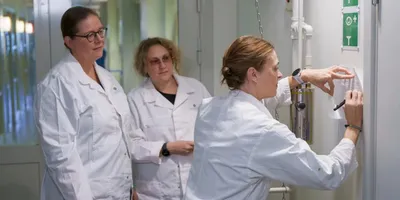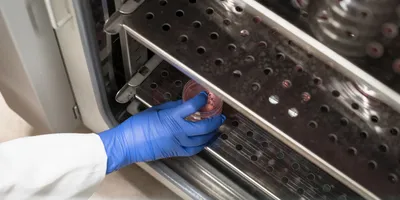Umeå University’s Department of Clinical Microbiology in Sweden is advancing a comprehensive laboratory safety program that emphasizes prevention, communication, and well-being. Work environment representatives Mikaela Lagerqvist, Carin Wibom, and Ylva Hedberg Fransson are leading the effort to integrate safety culture directly into research operations.
“Work environment efforts need to be highlighted as a central and strategic part of the organization—not something that happens alongside daily operations,” said Lagerqvist, laboratory assistant.
The team manages diverse work environment risks, including ergonomics, stress, and physical hazards. They also guide staff through the IA incident reporting system, a web-based tool used to log safety deviations, near misses, and accidents. Each report receives follow-up and corrective action to prevent recurrence.
Turning laboratory safety reports into action
One recent case demonstrates how incident reporting in laboratories can prevent accidents. “We once received a report about broken hinges on four –80°C freezers, which posed a safety risk,” said Hedberg Fransson, associate professor. “All the hinges were replaced before any accident occurred.”
The representatives categorize reports as “Oops” for near misses and “Ouch” for actual incidents, creating a shared language that promotes engagement and continuous improvement.
Collaboration drives cultural change
Since 2023, the department has expanded its work environment program through in-person meetings, joint HR partnerships, and inclusion initiatives. The new ALV working group unites representatives for environmental safety, equality, and anti-discrimination, encouraging a holistic approach to workplace health.
Promoting ergonomics and psychosocial safety in the lab
For research engineer Carin Wibom, a safe laboratory environment includes both physical and psychological protection. “It should feel safe to come to work, especially in a lab where we handle chemicals and technical equipment,” she said.
The team focuses on ergonomic assessments, proper workstation setup, and minimizing repetitive strain injuries. They also emphasize psychosocial safety—creating an atmosphere of inclusion, respect, and open communication.
“Just as important as lab safety and office ergonomics is the psychosocial work environment—how we treat each other and build a culture where everyone feels included and seen,” Wibom said.
Creating structure and leadership support for safety programs
Despite progress, representatives note that time allocation for safety roles remains inconsistent. “In theory, we are entitled to the time needed, but in practice it is often difficult to balance,” said Wibom.
As the department grows, leaders hope to formalize these roles into dedicated work environment positions, ensuring sustained oversight without reducing research capacity.
Lagerqvist added that continued collaboration with leadership is essential: “We would like to see work environment issues prioritized higher on the agenda. We have a good dialogue that will hopefully move things forward.”
What laboratory leaders can learn
For lab managers worldwide, Umeå University’s initiative demonstrates how systematic work environment management can build a resilient and engaged workforce. Integrating safety into daily workflows—through structured reporting, ergonomics programs, and inclusive communication—creates lasting improvements in both compliance and culture.
By combining lab safety, ergonomics, and psychological well-being, Umeå’s model shows that protecting people ultimately strengthens scientific performance and innovation.
This article was created with the assistance of Generative AI and has undergone editorial review before publishing.










